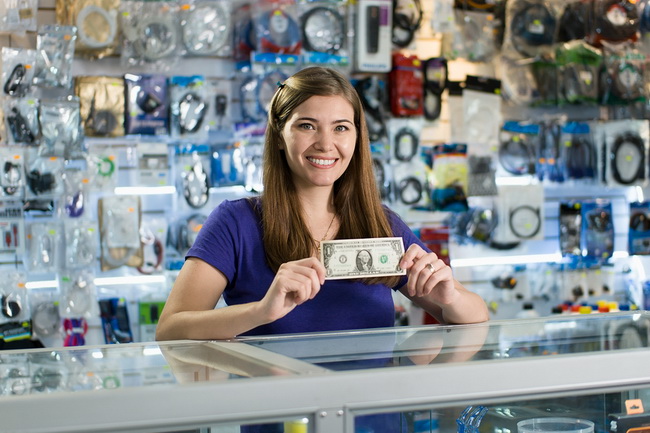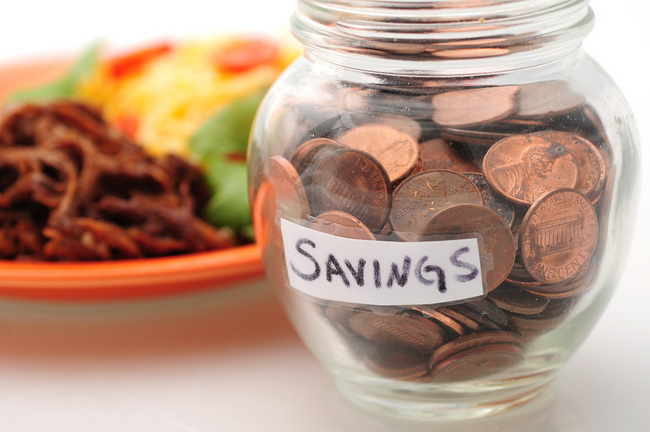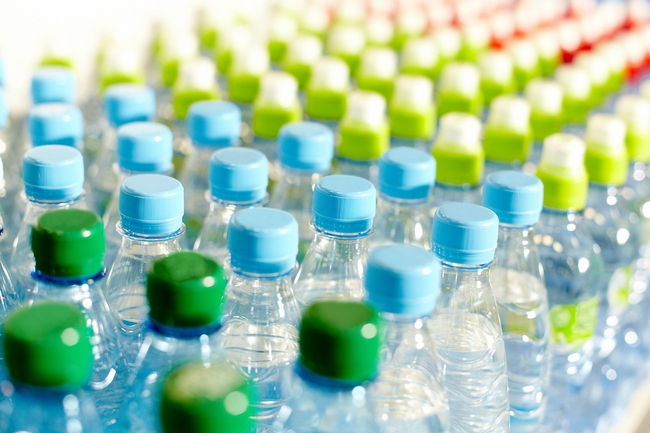- Make It Yourself Lavender Heart-Shaped Bath Bombs!
- 20 Things You Never Knew About “Down There”
- 12 Best Foods For Those Suffering From Arthritis Pain
- 12 Personal Hygiene Mistakes Almost Everyone Makes (Mom Never Told You About #4!)
- 15 Medicinal Plants And Herbs From The Cherokee People
- 12 Mind-Blowing Benefits Of Drinking Coconut Water During Pregnancy
- 12 Outstanding Winter Foods That Won’t Fatten You Up Like A Christmas Turkey
How Many Toxins Can You Buy for One Dollar?

Photo credit: bigstock.com
Who doesn’t love a good bargain? Everyone wants to get more than they paid for something, and that’s not a bad thing. This is the reason people love to shop at sales events, scour discount racks, and flock to yard sales and second hand stores. It’s also the reason why it seems as if those one dollar stores are popping up on every corner. Why pay $3 or $5 for a dishcloth you know will wear out in year when you can get a dishcloth for a buck? And for those who are on a tight budget, the dollar store can be a real lifesaver!
However, sometimes you get what you pay for. Americans need to be a little more wary when it comes to their shopping habits and stop assuming that simply because an item was imported into the US that it’s perfectly safe.
A recent test performed by HealthyStuff, an organization that looks into toxic chemicals that are found in everyday items and food stuffs, found that of the 164 dollar store items tested, an astonishing amount contained toxic chemicals, heavy metals, BPA’s, polyvinyl chloride plastic, and phthalates.
Perhaps you have heard of some recalls of pet food items that contained toxins, and not just an unacceptable amount, but in enough quantities that they actually killed a few pets. Imagine if that happened with some of the foodstuffs sold at these dollar stores?
HealthyStuff found that more than 80 percent of the products tested from various dollar stores contained at least one toxic chemical in a high enough amount to cause concern and many products had more than just one. Many of these chemicals are linked to birth defects, cancer, and learning disabilities. Although these items are supposed to be checked against a list for hazardous chemicals before they are imported, someone is not doing their job. When companies can find more than 133 items in one store that contain toxic chemicals, something is definitely wrong.
Continue to Page 2

Photo credit: bigstock.com
You might think that these dollar stores have nothing on the really big discount retail chain, Walmart, but think again. Just two of the biggest dollar store names combined have just shy of 10,000 locations across America, and Walmart? A mere 4,399. And those are just two of the biggest dollar store chains!
This study involved 4 of the biggest stores and combined they have sales of more than $36 million. Dollar stores might seem funny, but this is a huge business and like more big businesses, they are really only concerned with profit, not with the safety of their products.
One grass roots organization, The Campaign for Healthier Solutions, is asking dollar stores all over the country to at least remove children’s products that contain lead and phthalates. Many parents, who simply cannot afford those pricey toys from the mall, let their kids go wild at the dollar stores and get 6 or 7 toys. Unfortunately, many of these toys are made with toxic plastics, with some items being painted with lead paint, something that has been outlawed in America for decades!
These dangerous chemicals are found in much more than just kid’s products; they were also found in jewelry, school supplies, cleaning products, beauty items, and food.
If you are using cleaning products or beauty products, such as lotion or toothpaste, from dollar stores, you can do much better (and cheaper actually) by making your own cleaning products from more natural ingredients.
Although all the dollar stores respond to these complaints by insisting that every single one of their products meets federal guidelines, then perhaps the problem is with our federal guidelines. Only one store actually responded to requests about these contaminants (99 Cents Only) and they stated that they try to exceed federal regulations and that they used their own independent policies to try to ensure that everything they sell is safe, however, plenty of their products were found by HealthyStuff to contain dangerous toxic chemicals. The Consumer Product Safety Commission has said that they are investigating this study, but as of this writing, they have not come forth with any suggestions or statements.
Continue to Page 3

Photo credit: bigstock.com
Unfortunately, the people who are most affected by these items are the people who, due to their economic status, have little other choice than to buy food and personal care items from dollar stores. In fact, many of these dollar stores are found in communities that are full of low-income families that already live in more polluted areas of big cities. Often, these dollar stores are the only local “markets” that families can walk to purchase a gallon of milk. It’s the people who are really struggling to make ends meet who are most affected.
HealthyStuff states that they have tested thousands of products from dozens of different retail stores over the last decade and that, on average, products from the dollar stores are the poorest quality, as well as the poorest performing as far as chemical hazards are concerned.
The chemicals that are of the most concern include:
- Phthalates – linked to fertility problems and birth defects, learning disabilities, and cancer
- Polyvinyl Chloride Plastic (PVC, sometimes called vinyl) – These chemicals crate hazards throughout its life and is linked to lung disease, asthma, and toxic metals, such as lead, which harms the brain and the development of children’s brains, and lower IQ scores.
- BPA – a synthetic hormone that has been linked in numerous studies to breast cancer, obesity, early puberty, heart disease, and reproductive problems.
Dollar chain stores are not only putting the public at risk, they are also exposing their employees to unreasonable risk, as well as risking their business in much the same way Mattel did when they were forced to recall toys that were covered in lead based paint.
Families, individuals, and community groups should let the dollars stores know that they want safer products and that they will not tolerate the poisoning of their children.
SEE ALSO: Top 10 Household Items Known to Cause Cancer
Complete test results are available at HealthyStuff.org.
References:

































